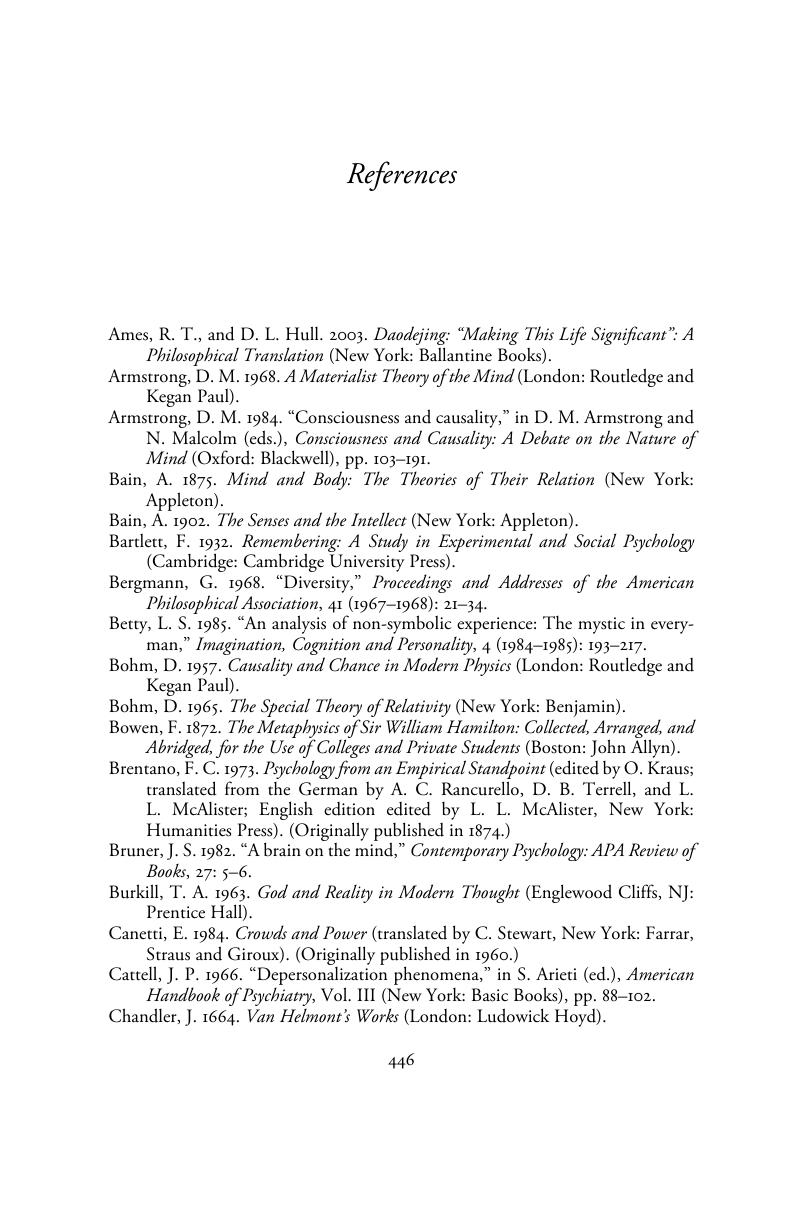Book contents
- The Conceptual Representation of Consciousness
- The Conceptual Representation of Consciousness
- Copyright page
- Dedication
- Contents
- Introduction
- Chapter 1 The concept of consciousness1
- Chapter 2 The concept of consciousness2
- Chapter 3 The concept of consciousness3
- Chapter 4 The concept of consciousness4
- Chapter 5 The concept of consciousness5
- Chapter 6 The concept of consciousness6
- References
- Index
- References
References
Published online by Cambridge University Press: 05 October 2015
- The Conceptual Representation of Consciousness
- The Conceptual Representation of Consciousness
- Copyright page
- Dedication
- Contents
- Introduction
- Chapter 1 The concept of consciousness1
- Chapter 2 The concept of consciousness2
- Chapter 3 The concept of consciousness3
- Chapter 4 The concept of consciousness4
- Chapter 5 The concept of consciousness5
- Chapter 6 The concept of consciousness6
- References
- Index
- References
Summary

- Type
- Chapter
- Information
- The Conceptual Representation of Consciousness , pp. 446 - 455Publisher: Cambridge University PressPrint publication year: 2015



